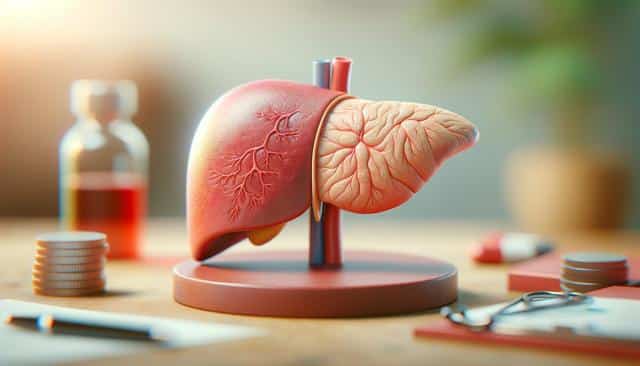
Understanding Fatty Liver: A Guide to Symptoms and Early Warning Signs
What Is Fatty Liver Disease?
Fatty liver disease, also called hepatic steatosis, occurs when excess fat builds up in the liver. This condition is increasingly common and is often linked to lifestyle factors such as diet, physical inactivity, and obesity. There are two main types: non-alcoholic fatty liver disease (NAFLD) and alcoholic fatty liver disease (AFLD). While the causes differ, both can lead to liver inflammation, scarring (fibrosis), and even liver failure if left untreated. NAFLD is particularly prevalent among individuals who consume high-sugar, high-fat diets or have metabolic conditions like type 2 diabetes or high cholesterol.
Early detection of fatty liver disease is crucial, as the liver can regenerate and heal if lifestyle changes are made in time. However, many people remain unaware that they have the condition due to the lack of noticeable symptoms in the early stages. Often, it is only discovered during routine blood tests or imaging scans. This underscores the importance of understanding and being vigilant about potential early warning signs.
Common Early Symptoms to Watch For
Fatty liver disease often begins silently, but some early symptoms may appear that should not be ignored. Recognizing these can help individuals consult a healthcare provider before the condition progresses. The following signs are commonly reported:
- Persistent fatigue or unexplained tiredness
- Discomfort or dull pain in the upper right abdomen
- Slight weight gain, especially around the abdomen
- Feeling of fullness even after small meals
Some people may also notice mild digestive issues, such as bloating or indigestion. While these symptoms are not exclusive to fatty liver and may be caused by other conditions, their presence warrants further investigation. As liver function declines, additional symptoms may arise, making early detection all the more critical.
Progressive Symptoms and Liver Damage
As fatty liver disease advances, more noticeable and concerning symptoms may develop. This progression can lead to non-alcoholic steatohepatitis (NASH), a more severe form characterized by liver inflammation and damage. Over time, NASH can result in fibrosis, cirrhosis, or even liver cancer. Symptoms in more advanced stages may include:
- Yellowing of the skin or eyes (jaundice)
- Swelling in the abdomen or legs
- Unexplained weight loss
- Confusion or difficulty concentrating (hepatic encephalopathy)
These signs indicate that the liver is no longer functioning properly. Individuals experiencing these symptoms should seek immediate medical attention. Managing fatty liver at this stage often requires medical intervention, including prescription medications, lifestyle adjustments, and in some cases, surgical procedures.
When to Seek Medical Advice
Given the subtle nature of early symptoms, many cases of fatty liver go undiagnosed. If you experience persistent fatigue, abdominal discomfort, or any of the symptoms outlined above, it’s advisable to schedule a check-up. Healthcare providers may order blood tests to evaluate liver enzyme levels, or imaging tests such as ultrasounds or MRIs to assess liver fat content.
In addition to symptoms, those with certain risk factors should be particularly proactive about screening. These risk factors include:
- Obesity or high body mass index (BMI)
- Type 2 diabetes or insulin resistance
- High blood pressure or cholesterol
- Excessive alcohol consumption
- Family history of liver disease
Early diagnosis leads to better outcomes. With appropriate lifestyle changes, many individuals can reverse liver fat accumulation and prevent long-term damage.
Lifestyle Changes to Support Liver Health
Managing fatty liver disease starts with addressing its root causes. Lifestyle modifications can significantly improve liver health and, in some cases, reverse the condition. Key strategies include:
- Adopting a balanced diet rich in vegetables, whole grains, and lean proteins
- Reducing intake of saturated fats, sugars, and highly processed foods
- Engaging in regular physical activity, such as walking or aerobic exercise
- Limiting or avoiding alcohol consumption
- Maintaining a healthy weight through gradual and sustainable changes
In addition to these steps, managing underlying conditions such as diabetes or high cholesterol is vital. Regular check-ups and monitoring liver enzyme levels can help assess progress and guide further action. Some individuals may also benefit from working with a registered dietitian or healthcare provider to develop a personalized plan.
Conclusion: Taking Charge of Your Liver Health
Fatty liver disease is a growing concern, but recognizing the symptoms early can make a meaningful difference. Whether you are experiencing mild fatigue or more advanced signs, paying attention to your body and consulting a healthcare provider can help you take control of your liver health. Through a combination of awareness, routine screening, and lifestyle changes, it is possible to support liver function and prevent serious complications. Staying informed and proactive is key to long-term well-being.


